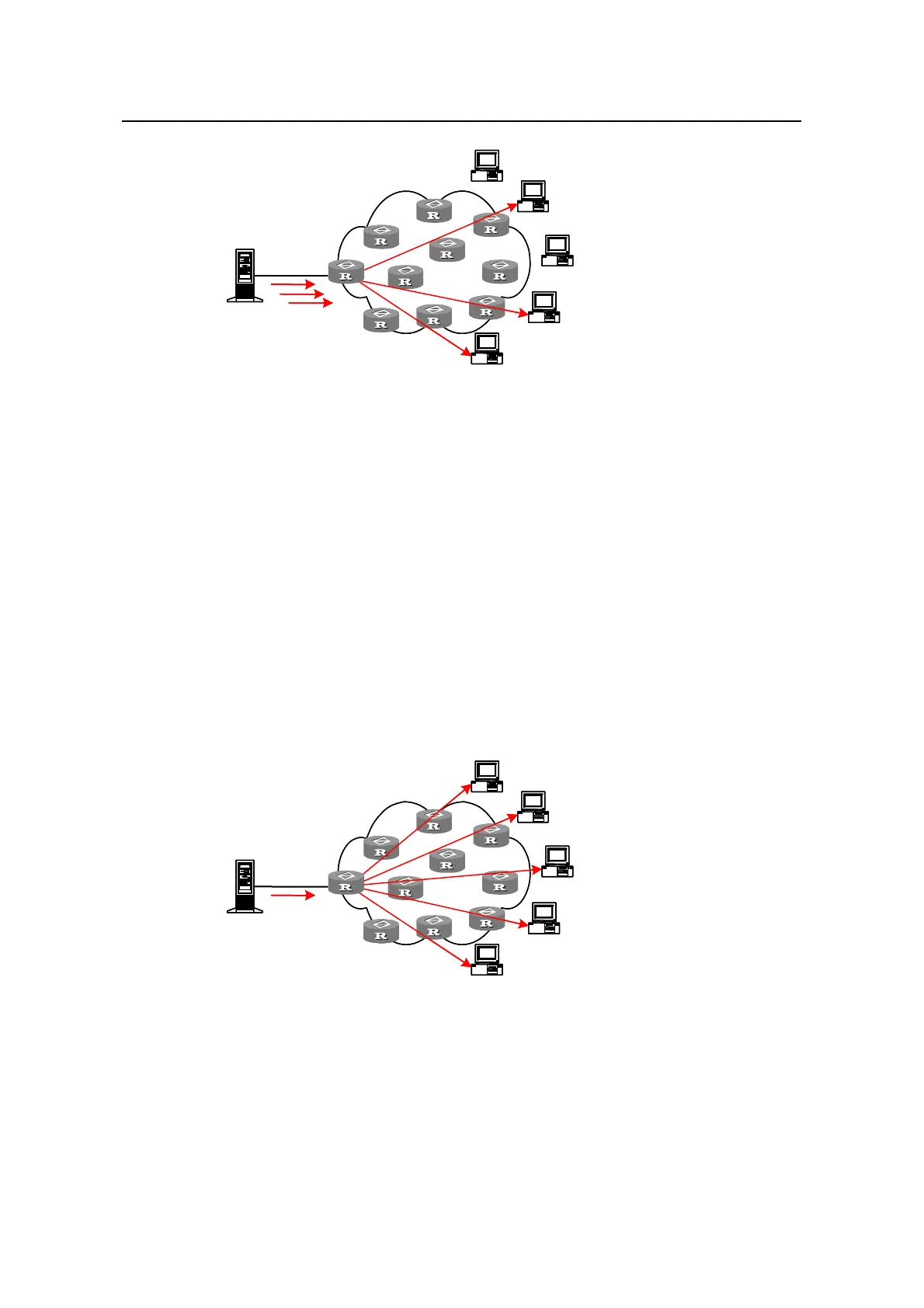Operation Manual – Multicast
H3C S3600 Series Ethernet Switches-Release 1510 Chapter 1 Multicast Overview
1-2
Server
Unicast
User A
User B
User C
User D
User E
Server
Unicast
Server
Unicast
User A
User B
User C
User D
User E
Figure 1-1 Information transmission in the unicast mode
Assume that users B, D and E need this information. The source server establishes
transmission channels for the devices of these users respectively. As the transmitted
traffic over the network is in direct proportion to the number of users that receive this
information, when a large number of users need this information, the server must send
many pieces of information with the same content to the users. Therefore, the limited
bandwidth becomes the bottleneck in information transmission. This shows that unicast
is not good for the transmission of a great deal of information.
1.1.2 Information Transmission in the Broadcast Mode
When you adopt broadcast, the system transmits information to all users on a network.
Any user on the network can receive the information, no matter the information is
needed or not.
Figure 1-2 shows information transmission in broadcast mode.
Server
Broadcast
User A
User B
User C
User D
User E
Server
Broadcast
Server
Broadcast
User A
User B
User C
User D
User E
Figure 1-2 Information transmission in the broadcast mode
Assume that users B, D, and E need the information. The source server broadcasts this
information through routers, and users A and C on the network also receive this
information. The security and payment of the information cannot be guaranteed.
As we can see from the information transmission process, the security and legal use of
paid service cannot be guaranteed. In addition, when only a small number of users on

